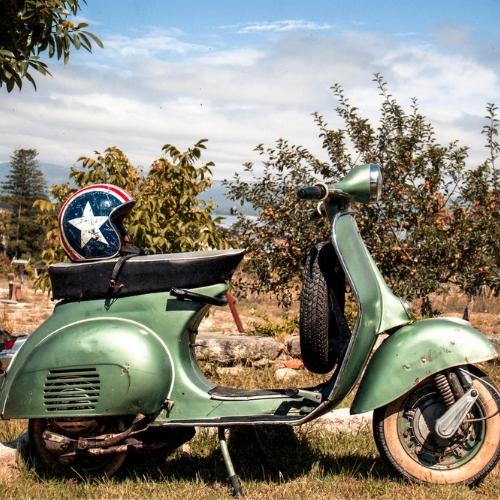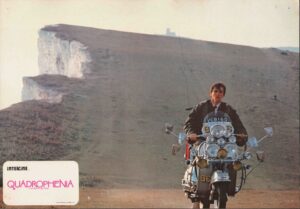Originating in the vibrant streets of London during the 1960s, Mod fashion began as a youth subculture, diverging from traditional sartorial norms and carving out a distinct identity that has influenced styles globally. Known for its sharp tailoring, bold patterns, and a spirit of rebellion, the Mod movement represented more than just clothing; it embodied a lifestyle of modernity and freedom.
What is Mod?
The term ‘Mod’ is derived from ‘modernist,’ a reflection of the new generation’s urge to break free from the constraints of the past. This cultural phenomenon arose as baby boomers came of age, seeking independence both financially and in terms of personal expression. Rejecting the muted tones of 1950s fashion, Mods embraced vibrant colors, geometric designs, and tailored silhouettes, creating a uniform that expressed their youthful exuberance and forward-thinking ideals.
The Cultural Revolution of the 1960s
London in the 1960s was a cauldron of creativity, famously dubbed ‘Swinging London.’ This era witnessed the rise of boutique culture, with iconic shopping streets like Carnaby Street becoming hotbeds of fashion innovation. Stores such as Mary Quant’s ‘Bazaar’ led the charge in providing stylish options for the youth, who were eager to adopt a look that resonated with their modern ethos.
Mods were known for their love of modern jazz music, an interest that was inseparable from their identity. They frequented the hippest jazz clubs, dressed in impeccably tailored suits that set them apart from the mainstream. Inspired by diverse cultural sources, Mods turned to Italy for their inspiration in tailoring and scooters, while Caribbean influences brought the lively rhythms of SKA music into their lives.
During this vibrant cultural landscape, however, tension brewed. The Mods’ well-dressed appearance often clashed with the rugged look of the Rockers, who favored black leather and motorcycling culture. This disconnect culminated in infamous clashes, such as the Easter weekend riots in 1964, which became emblematic of the youth culture divide.
Despite the media’s sensationalism framing these clashes as violent, the Mod movement maintained a sophisticated and aspirational reputation, intertwined with music and fashion. By the late 1970s, the original Mod cultural scene began to fade amidst the rise of counter-movements like hippie culture and punk. Nonetheless, the essence of Mod fashion endured.
The Mod Revival
The late 1970s witnessed a resurgence of interest in the Mod aesthetic, notably propelled by bands like The Jam, who fused punk energy with classic Mod styles. The release of the film ‘Quadrophenia’ in 1979 further romanticized this subculture, inspiring a new generation to adopt the cherished styles of their predecessors.
Key Elements of Mod Style
The hallmark of the original Mod look was its precision. Slim-fitting Italian suits, tailored with care, became the signature attire, often complemented by a classic Harrington jacket — a symbol of effortless cool that remained practical and stylish. Describing this iconic garment, the Harrington jacket was lightweight, featuring a tartan lining and a standing collar, effortlessly pairing with tailored trousers, jeans, or chinos.
As the Mod look evolved, certain staples emerged that are just as relevant today. For instance, polo shirts became a quintessential component. To achieve the authentic Mod aesthetic, these shirts should be buttoned all the way to the top, minimizing logos in favor of geometric designs. The Fred Perry polo, synonymous with the movement, remains a favorite.
Another essential element is the footwear. The classic penny loafer, inspired by American Ivy League trends, and the Clarks’ Desert Boot, a style that has transcended generations, are both quintessential Mod choices. While the original Mods opted for the penny loafer, the versatility and comfort of the Desert Boot make it an enduring favorite today.
Conclusion: The Timelessness of Mod Fashion
Mod fashion, since its inception, has not only managed to stand the test of time but has continually evolved, ensuring its relevance across generations. Today, it captures the imagination of style-conscious individuals who resonate with its non-conformist ideals and rich cultural heritage. The cherished values of inclusivity, modernity, and a love for music and fashion remain as potent as ever.
The Mod aesthetic embodies a powerful legacy, and its ongoing influence is celebrated by contemporary musicians and fashionistas alike. By incorporating Mod essentials into modern wardrobes, individuals continue to express their personal style while paying homage to this iconic fashion movement.
Coalesce the history, style, and spirit of Mod fashion into your own wardrobe, and embrace the ethos that has inspired countless individuals over the last six decades.
Here is an iconic representation of Mod fashion:

Image: Source Loofes Clothing
Incorporate these elements into your wardrobe to celebrate the iconic Mod style:

Image: Source Loofes Clothing
The Harrington jacket is a classic piece still embraced today:

Image: Source Loofes Clothing
Finally, the unique aesthetic of the iconic film, ‘Quadrophenia’:

Image: Source Loofes Clothing